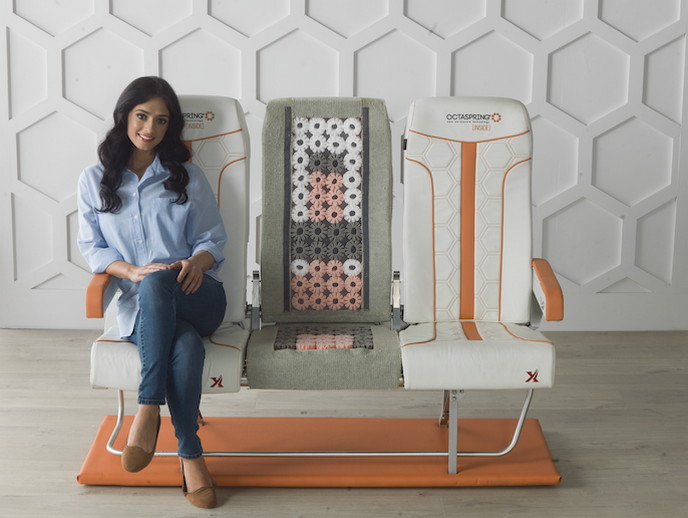Lighter seats for greener planes
Passengers and aircrew could soon be flying more comfortably and with a smaller carbon footprint, thanks to EU project ACME. The project has helped Slovenian start-up Vanema(opens in new window) design and test new aircraft seats, beds and pillows that are 30 % lighter than those on the market, meaning planes would need less fuel, which is better for the environment. “Every ounce of weight saved reduces emissions and improves efficiency,” said Mr Sandi Cesko, Vanema’s chairman. During the two-year ACME project, Vanema worked with airline manufacturer Airbus, airline seat manufacturer STELIA Aerospace and a subsidiary of Austria’s BOXMARK Leather to develop an economy seat weighing up to 300 g less than existing ones, a business class one 800 g lighter, a first class one 1.5 kg lighter and cabin crew mattresses 3 kg lighter. The ACME developers calculated that replacing seat cushions on just one aircraft would save 32 tonnes of weight, 1 500 litres of fuel and 46 tonnes of CO2 emissions per plane per year. “Imagine what kind of a difference we could make if only a dozen planes were equipped with our technology,” said Cesko. Cesko’s aircraft seats use an innovative mattress technology called Octaspring, a fusion of spring coils and foam, for which he bought the patent from Belgian designer Willy Poppe in 2011. Cesko’s company Studio Moderna implemented the technology into its DORMEO mattresses, and they are now selling in more than 40 different countries. Vanema uses a manual, labour-intensive process to individually place springs in its seats and mattresses, but its costs remain competitive because it uses half the foam of ordinary technology. Sit back, really relax The springs create more support for parts of the body needing it, and the structure of the Octaspring gives eight times the amount of ventilation, making the material cooler. “Our sleep studies show there is an average of up to three degrees of difference in temperature, and that makes for faster, deeper, longer sleep,” said Cesko. He set up the start-up ACME to try to introduce the foam and spring coil combination into the aviation industry. Obtaining EU funding for the ACME project was crucial in order to complete the necessary R&D to enter a new market. “The costs of entering this industry are prohibitively high,” said Cesko. In addition to product development, there are certification costs. “Our partners’ expertise in the aviation industry helped us cut out years of trial and error and allowed us to create products that are already positively accepted by several equipment manufacturers and airlines,” said Cesko. Airbus helped Vanema adapt its Octaspring technology to airline industry standards and to optimise the comfort and ergonomics of the seats. During ACME, Vanema fully certified a business seat cushion developed with STELIA Aerospace and is currently completing certification for an economy class seat. It is in talks with two manufacturers who want to add the ACME products to their catalogue, and with airlines interested in refitting planes. It is also completing a large consumer test of 15 000 cushions. So far, 78 % have found the seats more comfortable. “Comfort has been overlooked by many airlines. We intend to change that,” said Cesko.







